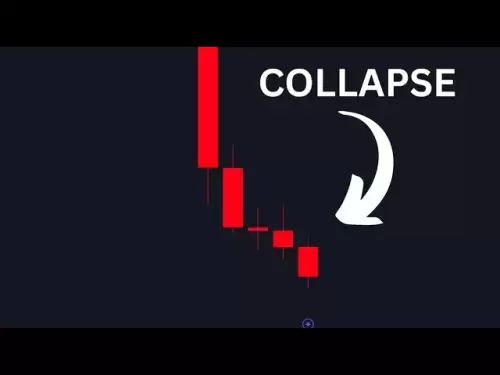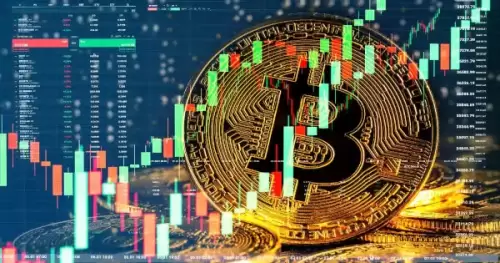 |
|
 |
|
 |
|
 |
|
 |
|
 |
|
 |
|
 |
|
 |
|
 |
|
 |
|
 |
|
 |
|
 |
|
 |
|
Cryptocurrency News Articles
Within 100 days, stocks, bonds and currencies all suffered a triple kill
Apr 14, 2025 at 12:18 pm
The 2008 financial crisis gave birth to the earliest believers of Bitcoin. The "suicide" of the fiat currency system in 2025 will also promote the growth of on-chain stablecoins

Within 100 days, stocks, bonds, and currencies suffered a triple kill, and the legal currency order is accelerating its collapse.
The 2008 financial crisis gave birth to the earliest believers of Bitcoin. The "suicide" of the fiat currency system in 2025 will also promote the growth of on-chain stablecoins, especially non-US dollar, non-fully-reserved interest-bearing stablecoins (YBS).
However, non-full-reserve stablecoins are still in the theoretical realm, and the aftermath of the collapse of Luna-UST in 2022 is still lingering, but driven by capital efficiency, partial-reserve stablecoins will surely become the mainstream of the market.
Non-US dollar stablecoins are still in the trial stage, and the US dollar's global currency status is still widely recognized. In order to maintain industrial capacity and employment, the renminbi will not actively internationalize on a large scale, and replacing the US dollar will be a very long process.
Based on the above two points, this article mainly examines the latest stage of existing stablecoins, that is, the overall appearance of YBS, a US dollar-based, fully-reserved on-chain stablecoin system, which contains the basic appearance of post-US dollar, non-fully-reserved stablecoins.
The seigniorage manifests itself internally as inflation, commonly known as domestic debt which is not debt, and externally as the US dollar tidal cycle.
Trump abandons dollar hegemony
From a technical point of view, the issuance of US dollars is a counter-trade between the Federal Reserve and the Treasury Department, which then uses the credit relationship of commercial banks to amplify the money multiplier, creating different statistical levels of money circulation such as M0/M1/M2/M3...
. In the past, the Fed would buy U.S. Treasury bonds to inject liquidity into the banking system, thereby increasing the money supply. However, this method was relatively slow and inefficient.
To speed up the process, the Fed began using a new technique called "helicopter money," where they would directly credit the bank accounts of individuals and businesses with new money. This method was named after an anecdote about an economist who suggested dropping money from a helicopter to stimulate the economy during a recession.
In essence, both techniques achieved the same goal: to increase the money supply and stimulate economic activity. However, helicopter money was a more radical and unconventional approach that drew criticism from some economists who argued that it would lead to inflation and other economic problems.
Despite the controversy, helicopter money became a common monetary policy tool in the wake of the 2008 financial crisis and the COVID-19 pandemic, as governments and central banks raced to mitigate the economic fallout of these crises. As the saying goes, necessity is the mother of invention, and the desperate measures taken to save the economy led to the creation of new monetary policy tools and a deeper understanding of the complexities of the global financial system.
In this model, U.S. debt (T-Bills, T-Notes, T-Bonds) is divided into long and short terms, maintaining the slow inflation of the U.S. dollar and short-term currency stability. The U.S. debt interest rate becomes the pricing basis for the entire financial world, and the U.S. dollar becomes the world currency. The cost is the U.S. external deficit and the dependence of various countries on the dollar.
The cost has always been two-way. The only product of the United States is actually the U.S. dollar itself, and countries around the world need to obtain the U.S. dollar and convert it into purchasing power.
The purchasing power of the U.S. dollar will depreciate in the long term and will not be affected by Trump's will. Countries must obtain U.S. dollars to minimize transaction intermediary costs. Barter is not impossible, but it is more cost-effective to use U.S. dollars directly.
The hard-earned U.S. dollars must be spent quickly, either on production or financial arbitrage, in order to preserve purchasing power and maintain the competitiveness of exports to the United States in the next stage.
Now this cycle is being destroyed by Trump's Schrodinger-style tariff system. Trump is increasing tariffs and forcing Powell to cut interest rates. Countries no longer want to hold dollars and are fleeing the U.S. bond market. The dollar/U.S. bond has become a risky asset.
The slow inflation of the U.S. dollar is a way to collect seigniorage from various countries. Only when all countries are required to hold or partially invest in U.S. debt can the damage to the U.S. dollar itself be reduced.
Assume the following scenario:
In the above cycle, Alice's motivation is to exchange labor for U.S. dollars and
Disclaimer:info@kdj.com
The information provided is not trading advice. kdj.com does not assume any responsibility for any investments made based on the information provided in this article. Cryptocurrencies are highly volatile and it is highly recommended that you invest with caution after thorough research!
If you believe that the content used on this website infringes your copyright, please contact us immediately (info@kdj.com) and we will delete it promptly.





























































